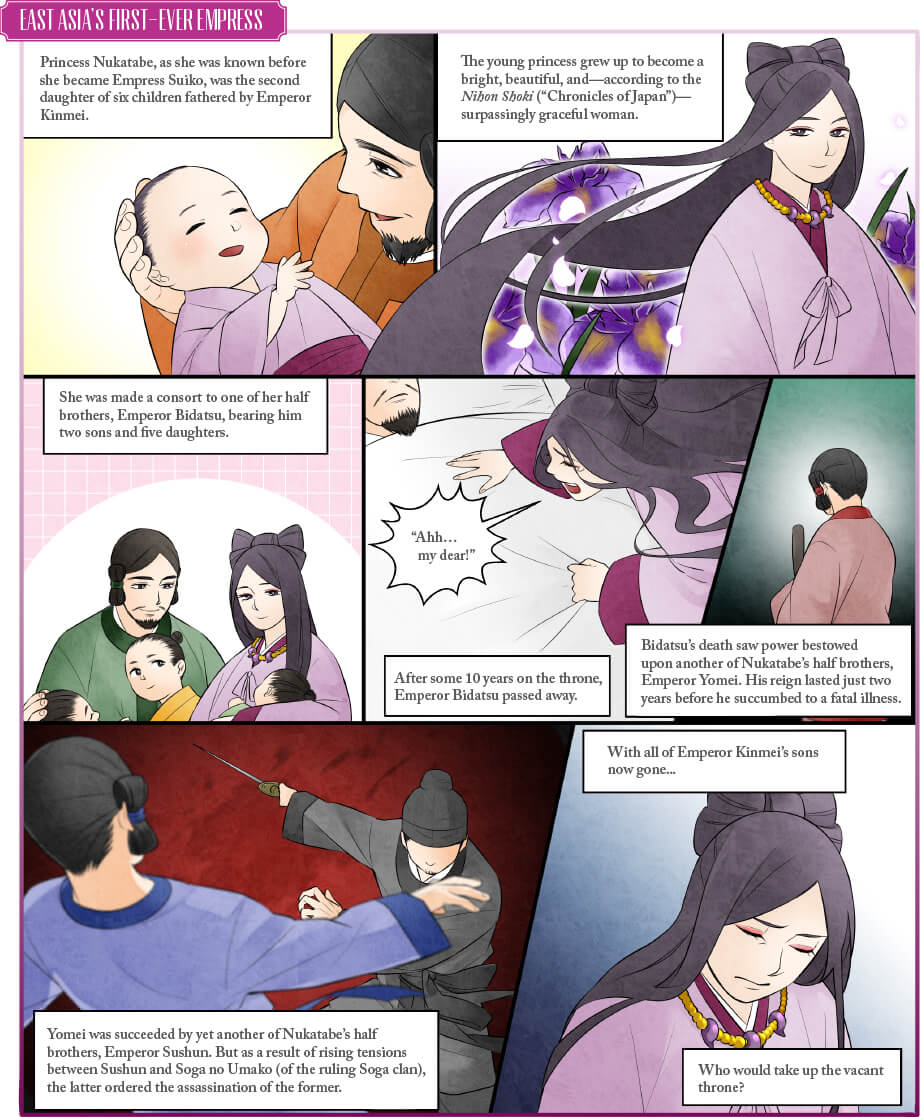A power struggle gives rise to Japan’s first empress. Her balanced perspective and communication skills lead to a long and stable reign.
A land afflicted by plague and conflict
During the reign of Emperor Kinmei, Buddhist statues and sutras were brought to Japan from Baekje, a kingdom in southwest Korea. At that time, the Mononobe and Nakatomi clans each played a part in overseeing religious and military duties. Both clans opposed the introduction of Buddhism, insisting that only traditional Japanese deities should be worshipped. Nevertheless, Emperor Kinmei bestowed a Buddhist statue on Soga no Iname, a man with strong ties to Chinese and Korean immigrants. Iname saw that the statue was duly venerated. But when a plague broke out, the Mononobe and Nakatomi clans seized the chance to blame it on the new religion, claiming it had incurred the wrath of the traditional deities. The two clans had the statue tossed into a canal, in an incident that aggravated the already tense relations between the Soga and Mononobe clans.
Japan’s first empress weathers a political storm
The Soga clan eventually defeated the Mononobe clan, but political turmoil lingered, as it did on the neighboring Korean Peninsula. Following the assassination of Emperor Sushun, Soga no Umako and other clan leaders sought to fill the power vacuum in Japan. They urged Princess Nukatabe—empress consort to the former Emperor Bidatsu—to accede to the throne, seeing in her great leadership potential. Only at the third time of asking did she finally acquiesce. At Toyurano-miya Palace in the year 592, the 39-year-old Princess Nukatabe was crowned Empress Suiko. She thereby became the first woman in the history of Japan—and East Asia—to be enthroned as an empress.

